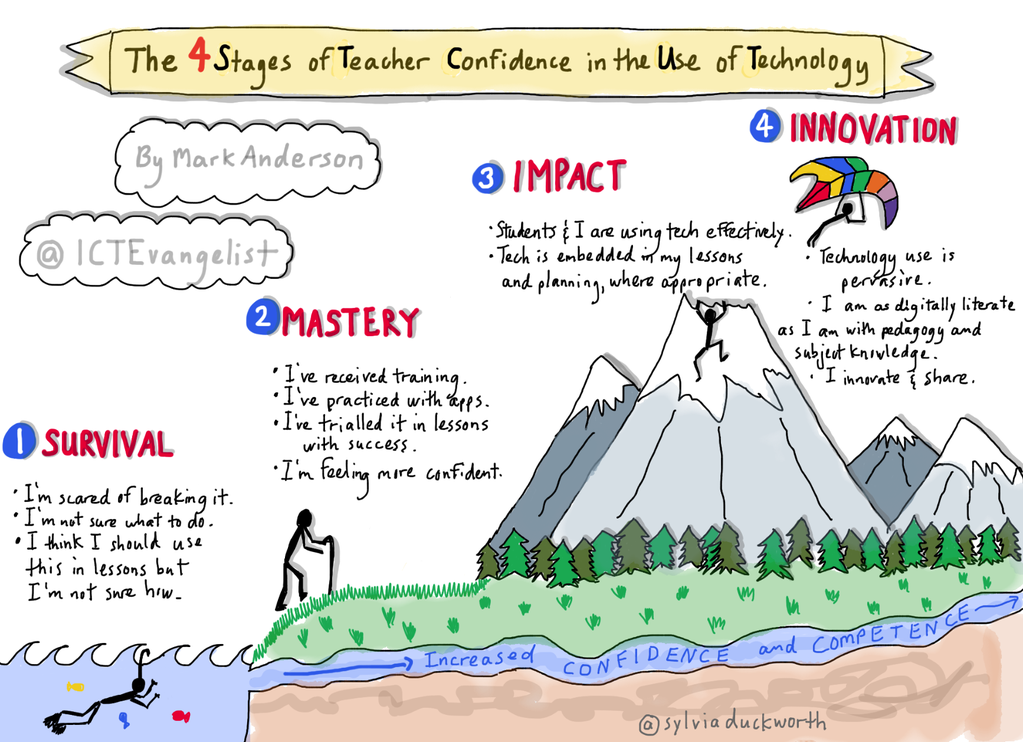
Great lessons have key characteristics. Many edu-bloggers have discussed the characteristics of great lessons but for me, the one person that nails it is as discussed in my introductory post to this series is Tom Sherrington. In his series he discusses the topic in some detail across ten posts. In my series I will be looking at how we can take these ideas and remix them while integrating technology in to the mix; not to take away the classic teaching methods he discusses but to augment them to help bring about new learning opportunities. In this post I’ll be looking at rigour.
In his post on the topic, Tom breaks it down in to some central themes:
“The nature of rigour can be highly subject specific, but there are some over-arching characteristics:
- The teacher pitches the material very high; there is no doubt that the most able students in the room are challenged and engaged.
- The teacher presents a strong command of the subject and uses that to select appropriately probing questions and tasks… this may come across as ‘passion’ but not necessarily. Rigour isn’t about excited enthusiasm; that is not what we’re talking about here.
- The teacher can respond intelligently to questions and can back-fill or widen discussion with examples, counter-examples and tangential ideas.
- Students are required to give precise answers, extended answers and answers that focus on the Why and How… not just the What.
- The use of accurate subject specific language is expected and reinforced.
- The teacher is prepared to challenge and accept challenge back; it matters that things are right – or that they are examined for truth and the general tone of the lesson is one of searching ever deeper.
- There is usually a general sense of high expectations in range of areas: concentration span; extended writing; independence and self-help; maturity and sophistication etc. All these things reinforce a rigorous approach to learning in the classroom.
- The focus is on intrinsic reward and motivation through the learning; rigour is rarely associated with ‘having a bit of fun’.. but actually, in great lessons, students get engrossed in rigorous tasks and enjoy the feeling of making progress. Serious endeavour, rigour and enjoyment are intertwined… a great teacher never dumbs it down or suggests that the ‘fun’ is all the easy stuff.“
For me this breaks down in to some key elements, most importantly though the key factor is about being a great practitioner – thinking about the remix, I think back to the traditional excellent teacher. Traditionally an excellent teacher would be one who has both strong content and pedagogical knowledge…
The missing link as noted in the video is that of TPACK and technology. As mentioned in the other posts so far, this series of posts isn’t going to recommend getting rid of existing practices which are already amazing and staples in the classroom. The idea is to either augment them or to look at ways in which these ideas can be remixed. With this in mind, when it comes to rigour in the classroom I can only add technology in to the mix.
You can “back-fill or widen discussion with examples, counter-examples and tangential ideas” by providing extra learning opportunities with resources from online courses, YouTube playlists, curated boards on Pinterest, so forth and so on. You can also reinforce accurate subject specific knowledge and language, not just through what you say, but what you provide in terms of resource and through any technology based testing that you do.
A simple way for example of reinforcing correct language and spelling of technically demanding words might be to mirror your device to the screen asking students to spell things – would I do this in class though? Probably not – asking a student to write it on the actual board or to write it on their mini-whiteboard or even just spell out loud, is just as valid. This is where knowing whether or not technology can support learning further is crucial and is why it is a key element of the TPACK model.

My key point in this post about remixing classroom practice with technology is to know your stuff when it comes to using technology. It is clear (to me at least) that using technology to support and enhance teaching and learning in the classroom can bring learning gains. The key however is to know when or when not to use that technology. This knowledge and classroom skill for us practitioners does not come easily though. It involves plenty of practice, play and knowledge of different educational technologies that work. I’m able to do that now because I’ve spent a long time training myself and working at what I do. Getting classroom teachers (who are pressured enough) to be able to embed and use technology in a purposeful and effective way need plenty of support and training through ongoing CPD. Some of this is done through taking control of your own CPD as discussed here. Some of that however needs to come through support from the school as a whole.
More and more, schools and teachers are improving with their use of technology in the classroom. It’s not the only area that colleagues require CPD with but it is an area where many colleagues will need help. There are a number of different ways that you can support colleagues, not just with time, but with things like student digital leaders, providing support with equipment – some schools for example give iPads to teachers to use in lessons or have schemes where staff can buy devices through a salary sacrifice scheme or where the school contributes towards the cost of the device. Other things such as in-house courses on iTunes U or training sessions shared and developed within teacher learning communities in the school can all help to develop the capacity of staff. Small deliberate and supportive steps are the key to providing support for colleagues so that they can build and develop their confidence.
As recently blogged, thanks to Sylvia Duckworth for her representation of my teacher confidence with technology poster.
Providing scaffolding and support for colleagues so that they are able to move upwards from the survival phase will ensure that colleagues are best placed to be able to make confident decisions about whether or not to use technology. It should be expected that teachers will have some considerable experience in their content and pedagogical knowledge. Support will be provided in these areas, but if teachers are to be expected to be able to use technology purposefully so that they can effectively remix their classrooms, support has to be there.
I’d love to hear your thoughts on this topic. Please get in touch or drop a comment in.
Thanks!
















I love the idea of these posts, but for once, I feel you might be selling tech short in the opportunities to build rigour into great lessons. Work, exceptional work created by our students will only be improved with really good feedback. The opportunities to give feedback using tech such as google forms, EE and more gives students and staff a wonderful opportunity to give detailed feedback that students can listen to, watch and act on time and time again. The feedback could also give links to other great work to inspire and stretch. The opportunities to use tech to enhance feedback and thus rigour are endless. I would also consider getting students to have a real, global audience for their work is a game changer in getting students to really ensure that their work and learning is the very best it can be. Creating online portfolios and blogging is a great opportunity for students to see the quality, depth and complexity of their own and others work. Finally, challenging rubrics- for example assessing academic language, quality of explanations etc. which can be accessed online for students to download and use to help them get the most out of every learning opportunity. Sharing drafts of their work online, keep pushing so that the rigour we are aiming for goes through the roof. Very much looking forward to the next post!
Hi Pete
Thanks for taking the time to reply. Appreciate it and your comments. I agree completely with what you have to say but I am saving those for the sections where I feel they are most appropriate; so with the point about feedback, I’ll be examining that in journeys (learning); with authenticity through global audience I’ll be looking at that in the next post on challenge, so forth and so on. So… not disagreeing here but thought that in the section on rigour, it was about the rigour of the educator, in terms of their practice which was most relevant. Also – I didn’t want to repeat myself either. I didn’t want to repeat myself.
Cheers Pete,
Mark
Great post, Mark. I have decided to rank the staff I work with based on their confidence and ability in using tech to enhance learning. For those teachers ranked 1, I just provide them with ideas/software/apps I think might be useful and then ask them for some feedback at a later date. Those ranked 2 get the same suggestions but also with ideas about how to use them in the classroom, again with a follow-up. Finally, those ranked 3 are given demos by me followed by team-teaching if needed hopefully leading to them using the tech independently.
Love it Bryn – thanks for sharing. My take on it has been to support 1’s with Digital Leaders, support 2’s with 3’s and support 3’s myself.